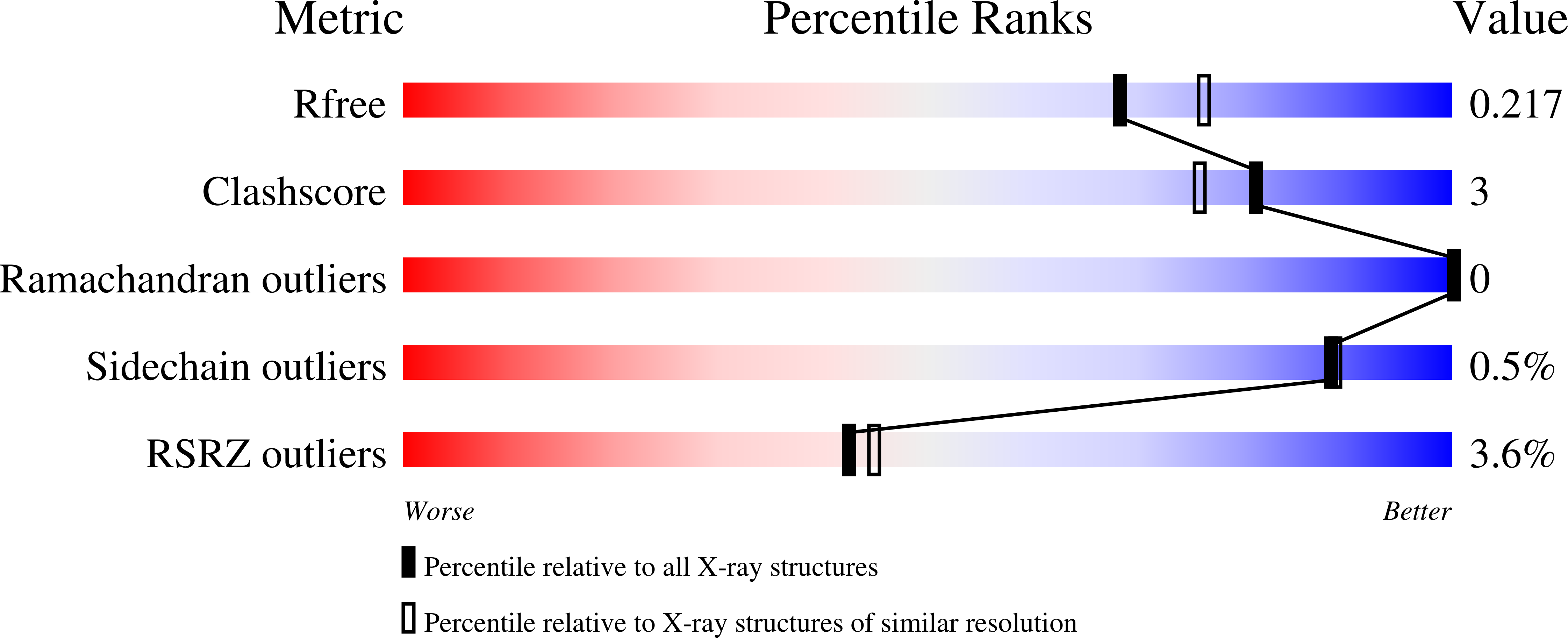Evolution of (p)ppGpp-HPRT regulation through diversification of an allosteric oligomeric interaction.
Anderson, B.W., Liu, K., Wolak, C., Dubiel, K., She, F., Satyshur, K.A., Keck, J.L., Wang, J.D.(2019) Elife 8
- PubMed: 31552824
- DOI: https://doi.org/10.7554/eLife.47534
- Primary Citation of Related Structures:
6D9Q, 6D9R, 6D9S - PubMed Abstract:
The alarmone (p)ppGpp regulates diverse targets, yet its target specificity and evolution remain poorly understood. Here, we elucidate the mechanism by which basal (p)ppGpp inhibits the purine salvage enzyme HPRT by sharing a conserved motif with its substrate PRPP. Intriguingly, HPRT regulation by (p)ppGpp varies across organisms and correlates with HPRT oligomeric forms. (p)ppGpp-sensitive HPRT exists as a PRPP-bound dimer or an apo- and (p)ppGpp-bound tetramer, where a dimer-dimer interface triggers allosteric structural rearrangements to enhance (p)ppGpp inhibition. Loss of this oligomeric interface results in weakened (p)ppGpp regulation. Our results reveal an evolutionary principle whereby protein oligomerization allows evolutionary change to accumulate away from a conserved binding pocket to allosterically alter specificity of ligand interaction. This principle also explains how another (p)ppGpp target GMK is variably regulated across species. Since most ligands bind near protein interfaces, we propose that this principle extends to many other protein-ligand interactions.
Organizational Affiliation:
Department of Bacteriology, University of Wisconsin, Madison, United States.
















